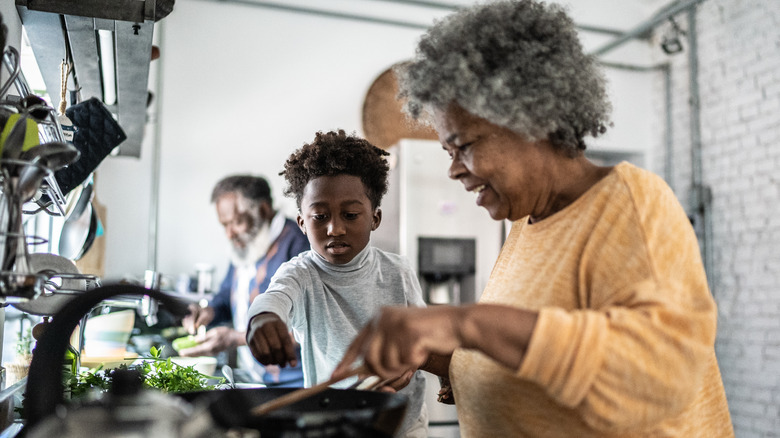The Part Of A Recipe You Really Need To Stop Skipping Over
Food nerds across the internet have got their apron strings in a twist about recipe headnotes – those (more or less) short, descriptive introductions that come before the ingredients list. Traditionally, headnotes in the best cookbooks are about a paragraph long, but the food blogging world has changed that. The running joke is that cooks have turned headnotes into superfluous essays that meander and digress, lingering too long and lovingly on irrelevant details. All readers really want, headnote haters say, is to know what ingredients to gather and what to do with them to get dinner on the table. Nobody wants your story. Cut the fat; keep the meat!
If you're skipping the headnotes, though, and scrolling straight down to the recipes, you could be missing more than you think. Even the most long-winded offenders are probably harboring juicy morsels of "meat" in their "fat." (Also, as in cooking, fat gives flavor.) Skipping headnotes should never be your go-to when reading a recipe. Even when you're faced with a particularly long one, give it a lookover at the very least, because headnotes offer far too much value to be dismissed off the bat.
Headnotes offer a wealth of culinary knowledge
Skipping a recipe's headnotes means you risk missing out on essential information that could make or break the dish (or at least your experience of cooking it). Whatever else authors may choose to say, they often use this section to provide advice on ingredient swaps and general recommendations the average home cook wouldn't have thought of. These can be anything from suggestions for good egg substitutions in baking to a nota bene advising you to rinse your cashews in cold water first if you've got the salted version, as Kwoklyn Wan does in his headnote for spicy hoisin chicken in "Chinese Takeout Cookbook."
Oftentimes, headnotes contain tips transferable to other dishes, too. In "The Complete Mediterranean Cookbook," America's Test Kitchen shares a brilliant tip for optimizing texture in its recipe for classic hummus. The authors explain how creating an emulsion was the ticket to mitigating the grainy texture they encountered when processing the chickpeas alone. Not only does such a note explain the reasoning behind a step that a newer cook may not otherwise see the value in, it can also expand your flexibility as a home cook in general; this is advice you may be able to apply yourself to other dishes to solve a textural problem before it even occurs. Most importantly, the information isn't found early in the headnote — you have to read to get there, and the results are absolutely worth it.
Good headnotes provide valuable story and context around the dish or cuisine
You may also find the origin story behind a dish in the headnotes, whether it's a personal tale or a cultural one. However, it's the more personal ones that receive the brunt of headnote-hating snark online. Slate examined the phenomenon in 2020, noting the role of context collapse — diverse audiences and contexts colliding in one space on the internet – in the hostility toward long headnotes in recipe blogs. Foodies and dedicated recipe lovers are more likely to value details of a dish's creation and development than a non-foodie netizen who has stumbled on a web page in search of tonight's dinner. Yet, here we all are on the same food blogs, reading the same headnotes.
Do these headnotes matter, even if a portion of the audience is only there for the ingredients and instructions? If people and culture matter, so do the stories behind what we cook and eat. Also, consider this: In a thread on X (formerly Twitter), Deb Perelman of Smitten Kitchen had this to say about the disdain for long headnotes: "It's mostly women telling these stories. Congratulations, you've found a new, not particularly original, way to say 'shut up and cook ... '"
So, while you may not always have time to read headnotes, at least give them a glance. You'll find invaluable morsels of knowledge there, not to mention a glimpse of the humanity behind the meal.


